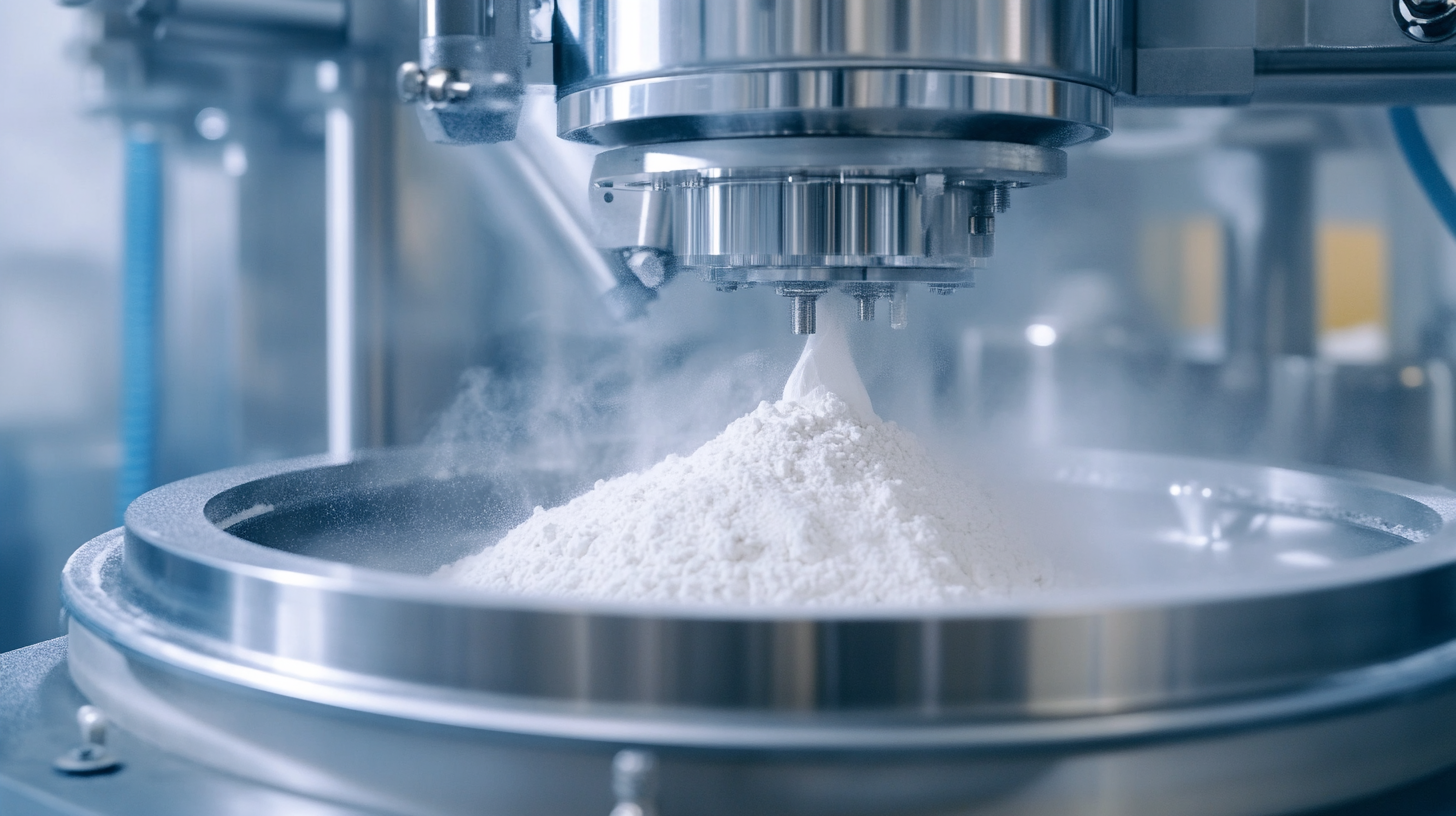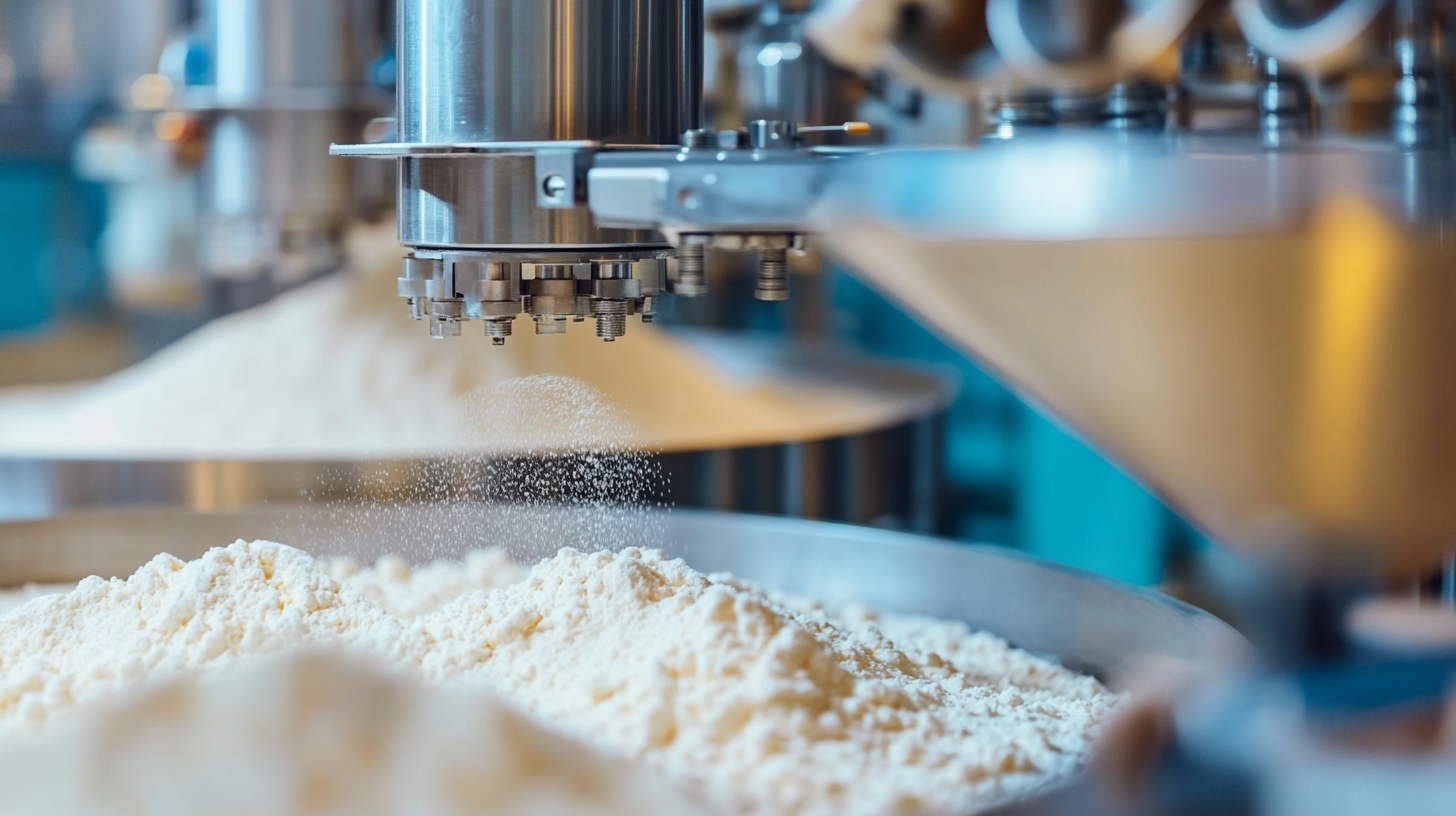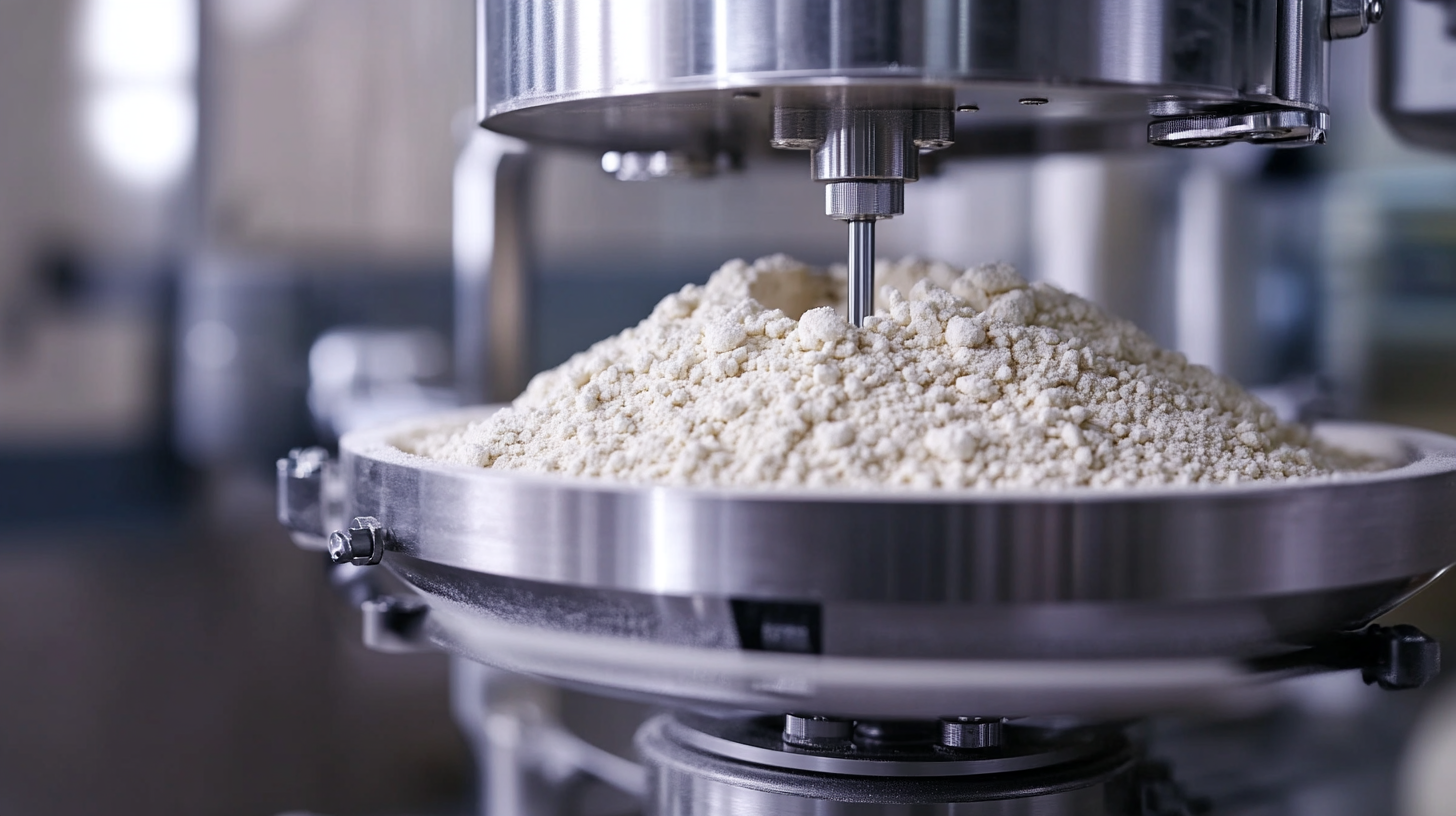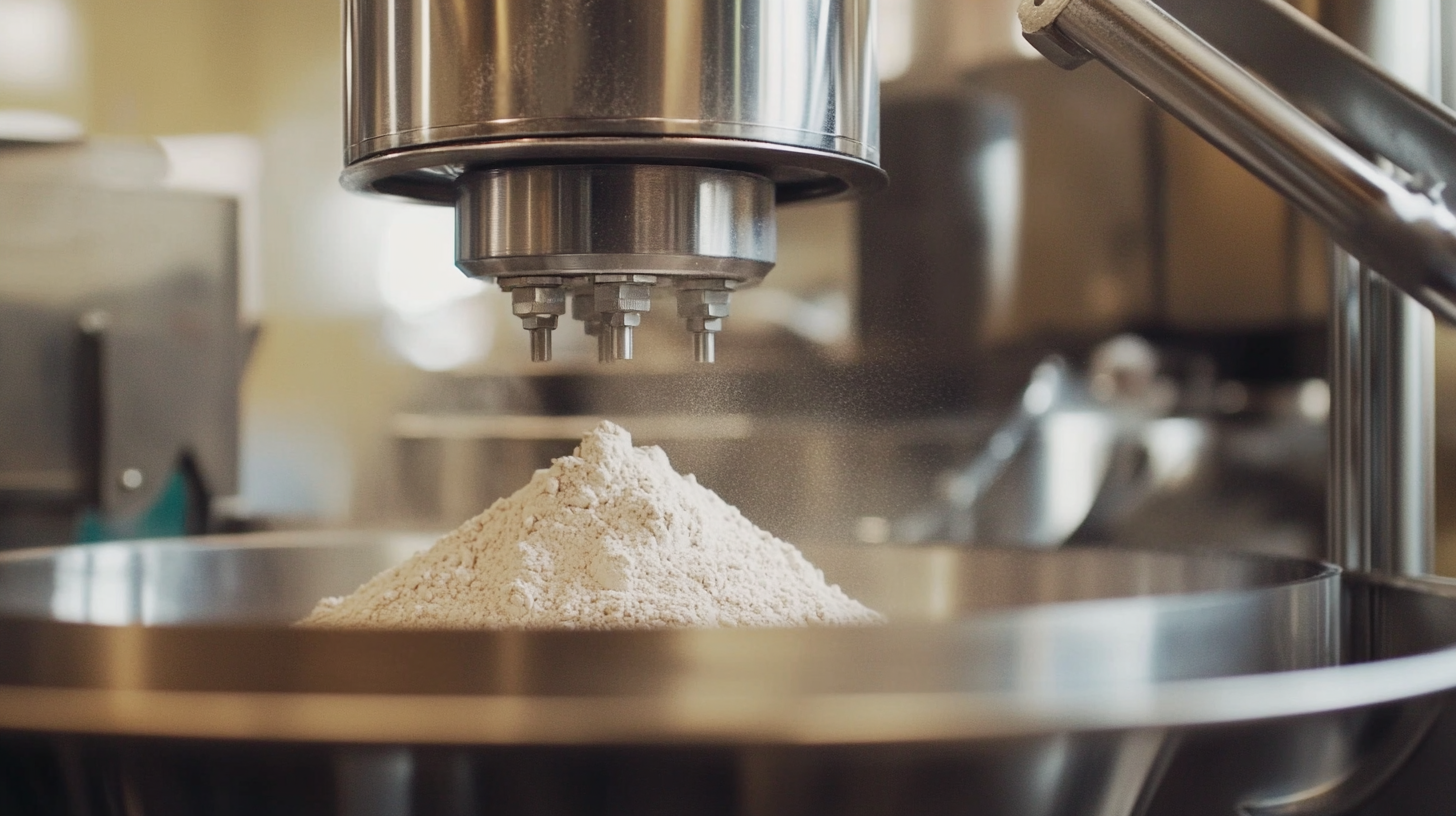In today's competitive manufacturing landscape, efficiency and precision are paramount. The global powder filling machine market is projected to witness significant growth, with estimates suggesting a rise from USD 700 million in 2021 to over USD 1 billion by 2028, according to a recent industry report. This surge is largely driven by the increasing demand for automated systems that enhance productivity and reduce labor costs across a diverse array of sectors, including pharmaceuticals, food and beverages, and chemicals. As businesses strive to keep pace with evolving consumer expectations and regulatory standards, investing in the right powder filling machine becomes a crucial step towards streamlining operations and ensuring product quality.
Selecting the best powder filling machine requires an understanding of not only the available technologies but also the specific needs of your operation. With a multitude of options on the market, businesses must consider factors such as fill accuracy, speed, flexibility, and ease of maintenance. Industry statistics indicate that manufacturers prioritizing automation can improve production efficiency by up to 30%, highlighting the importance of making an informed choice. As we dive into effective strategies for selecting the ideal powder filling machine, it’s essential to examine both current market trends and best practices to optimize your production processes.

When considering the acquisition of a powder filling machine, a crucial first step involves thoroughly assessing your business needs. According to a report by Grand View Research, the global powder filling machine market is projected to reach $7.16 billion by 2025, highlighting the increasing demand for efficient packaging solutions across various industries, such as pharmaceuticals, food, and cosmetics. Understanding your specific requirements, such as production volume, powder characteristics, and space constraints, will help in selecting the right machine that aligns with your operational goals. One of the primary factors to evaluate is the volume of product you plan to fill. For instance, high-output operations may benefit from fully automated powder filling machines capable of handling up to 120 containers per minute, as noted in a study by Research and Markets. Conversely, smaller businesses might find semi-automatic options sufficient, offering flexibility and lower capital investment while still achieving noteworthy efficiency. Additionally, it’s important to consider the flow characteristics of the powders being used. For instance, free-flowing powders may require different filling technologies than cohesive powders, which necessitate careful selection to minimize waste and ensure accuracy. The compatibility of the machine with existing production lines and its adaptability to future needs is also essential. According to a survey by PMMI, nearly 75% of manufacturers are looking for solutions that can easily integrate with their current systems, emphasizing the importance of flexibility in machinery. By taking a comprehensive approach to evaluate these factors, businesses can make informed decisions that lead to improved productivity and cost efficiency in their powder filling operations.

When selecting a powder filling machine for your business, understanding the key features that enhance operational efficiency is crucial. One of the primary aspects to consider is the accuracy and precision of the machine. According to a report by Research and Markets, filling accuracy can influence product quality, with less than 1% variance being essential in pharmaceutical applications. Ensuring that your equipment can meet these stringent standards will not only maintain product integrity but also optimize your production line efficiency.
Another significant feature is the machine's versatility. Depending on your business’s needs, the ability to handle various powder types and package sizes can drastically improve efficiency. A study from Technavio suggests that businesses employing multi-functional powder filling machines can reduce operational costs by as much as 20%. This adaptability allows companies to scale up production without the need for multiple machines, saving time and resources.
Additionally, the automation level of your powder filling equipment can greatly impact productivity. Semi-automated and fully automated systems can significantly reduce labor costs and minimize human error. The packaging automation market is projected to grow by 4.22% from 2020 to 2025, according to Mordor Intelligence, underscoring the importance of integrating advanced automation in your operations. Investing in technology that streamlines the filling process, reduces downtime, and enhances speed is essential for maintaining competitiveness in today’s market.
Identifying these key features—accuracy, versatility, and automation—will help businesses select the best powder filling machine tailored to their operational needs, ultimately driving efficiency and profitability.

When considering powder filling machines, understanding the different types available is crucial for enhancing operational efficiency. The market offers various filling solutions, each designed to cater to specific product needs and manufacturing scales. For instance, manual filling machines, typically suitable for small-batch production, are cost-effective but often slower, averaging around 10-15 fills per minute. In contrast, semi-automatic machines can ramp up the speed to approximately 30-45 fills per minute, making them ideal for mid-sized operations that require a balance of speed and cost-effectiveness.
For larger-scale operations, fully automatic powder filling machines stand out. According to a report from MarketsandMarkets, the demand for fully automated machinery is projected to grow steadily, reaching a market size of $2 billion by 2027, driven by the need for efficiency and accuracy in high-volume production lines. These machines often integrate advanced technology, including servo motors and PLC (Programmable Logic Controller) systems, enhancing their filling accuracy to within 1-2 grams per fill, which is critical for industries like pharmaceuticals and nutraceuticals.
Moreover, businesses must also consider the type of powder being filled. Free-flowing powders can be efficiently handled by auger fillers or vacuum filling systems, while cohesive or non-free-flowing powders may benefit from handling systems like vibration fillers. According to a recent study by Allied Market Research, the powder filling equipment market is expected to witness a CAGR of approximately 5.2% from 2021 to 2028, reflecting the increasing diversity of powder formulations and the need for tailored filling solutions. Choosing the right type of powder filling machine not only optimizes production efficiency but also ensures product quality and compliance with industry regulations.

When selecting the best powder filling machine for your business, it's crucial to navigate the complexities of budget constraints and the pursuit of cost-effectiveness. Understanding how budget limitations can impact your choices is vital, especially in an era where financial decisions can influence the very survival of operations. The concept of a soft budget constraint, often seen in various sectors, illustrates how organizations sometimes operate under the assumption that additional funding can be secured, even when it’s unrealistic. This mindset can lead to inefficient resource allocation, particularly in selecting machinery that might not align with long-term operational goals.
As businesses strive for efficiency, recognizing the implications of budget constraints can enhance decision-making. It's essential to evaluate various powder filling machines against their price points and capabilities, ensuring that the selected option meets both immediate needs and future growth potential. For example, the challenges surrounding large infrastructure projects often serve as a reminder of how unforeseen costs and demands can affect budgets. Applying these lessons in product selection could mean opting for machines that offer scalability and reliability while staying within financial means.
Furthermore, as organizations face the ongoing pressures of budget approvals, it becomes increasingly important to prioritize investments that drive productivity. Many employers cite budget approval as a barrier to implementing necessary changes, indicating that strategic planning and clear financial forecasting are more important than ever. By carefully analyzing the cost-effectiveness of powder filling machines, businesses can prevent potential pitfalls associated with underfunding, thereby setting a solid foundation for operational success.
When investing in a powder filling machine, long-term efficiency hinges not just on the initial choice of equipment but significantly on ongoing maintenance and support. Regular maintenance is crucial in preventing downtime and ensuring the machine operates at peak performance. Scheduled inspections and timely servicing can help identify potential issues before they escalate, saving both time and costs in the long run. Establishing a routine—such as daily checks and monthly maintenance protocols—can contribute significantly to the machine's longevity and reliability.
Another critical aspect of maintenance is the availability of support from the manufacturer or supplier. A robust support system might include readily accessible technical assistance, comprehensive training for your staff, and access to spare parts. Companies should prefer suppliers offering a dedicated customer support team that can quickly address any mechanical or operational issues that arise. This can minimize disruptions and maintain the flow of production. Investing in a powder filling machine comes with the responsibility of configuring an effective maintenance strategy, ensuring that the equipment continues to meet the business's demands efficiently.
Headquarters
2980 Scott St, Vista, CA 92081
Phone: (760) 734-4177
Fax: (760) 734-4188
Open: 8:00 am – 4:30 pm
Texas
8051 Jetstar Dr #175 Irving, TX 75063
Phone: (972) 915-6888
Fax: (972) 915-6999
Open: 8:00 am – 4:30 pm
Florida
14231 Jetport Loop. #1 Fort Myers, FL 33913
Phone: (239) 225-4020
Fax: (239) 225-4024
Open: 8:00 am – 4:30 pm